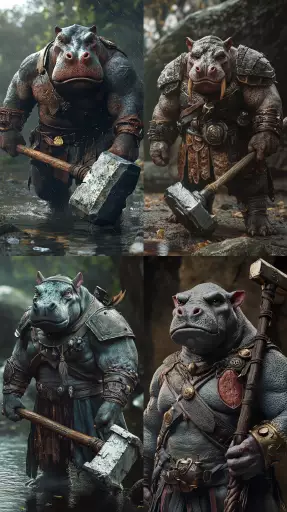Explore the Best AI Image Gallery

Weaving Innovation: How AI Image Creation Tools Are Reshaping the Creative Landscape
The realm of artistic creation is undergoing a seismic shift with the emergence of AI image generation tools. These sophisticated algorithms, capable of producing stunningly realistic and imaginative visuals from simple text prompts, are blurring the lines between human and machine creativity. This paradigm shift has ignited both excitement and apprehension within the creative industry, prompting a crucial conversation about the potential benefits, ethical challenges, and future implications of this technology.
Democratizing Creativity: Expanding Access and Possibilities
One of the most significant impacts of AI image creation tools is their ability to democratize access to artistic expression. No longer confined to professional artists with specialized skills and expensive equipment, anyone with an internet connection can now conjure up captivating visuals. This opens up a world of possibilities for individuals from diverse backgrounds to explore their creativity, experiment with different styles, and bring their imaginative visions to life.
Unlocking Efficiency and Exploration: Streamlining Creative Workflows
AI image generation tools are proving invaluable as assistants in streamlining creative workflows. Designers can leverage these tools to rapidly generate a range of concept art options, saving valuable time and resources. Illustrators can utilize them to quickly produce rough sketches or explore different visual interpretations. This increased efficiency allows creators to focus on higher-level conceptualization and refining their ideas.
Pushing Creative Boundaries: Exploring New Artistic Frontiers
The potential for artistic innovation is boundless with AI image creation tools. These algorithms can generate unique and unexpected visuals, pushing the boundaries of traditional art forms. Imagine generating surreal landscapes, abstract patterns, or even portraits that combine elements of different styles and genres. This fosters experimentation and exploration, leading to the emergence of entirely new artistic expressions.
Ethical Considerations: Navigating Bias, Authenticity, and Ownership
While the possibilities are exciting, it is imperative to address the ethical considerations surrounding AI image creation tools. One concern is the potential for bias in the training data, which could result in generated images reflecting existing societal stereotypes or prejudices. Ensuring fairness and diversity in training datasets is crucial to mitigate this risk.
Another key issue is the question of authenticity and originality. While AI-generated images can be stunningly realistic, it is important to be transparent about their creation process. Consumers should be aware that they are viewing machine-created art, and artists should be recognized for their role in guiding and refining the output.
The issue of copyright and ownership also arises with AI image generation. Who owns the rights to the images created by algorithms? Is it the creator of the AI, the user who provides the prompts, or the algorithm itself? These are complex legal questions that require careful consideration as the technology evolves.
The Future Landscape: Collaboration, Regulation, and Continuous Evolution
Looking ahead, the future of AI image creation tools is likely to involve a dynamic interplay between human creativity and machine intelligence. We can anticipate increased collaboration between artists and AI systems, where humans provide the conceptual direction and AI assists in executing the technical aspects. This collaborative approach has the potential to unlock unprecedented levels of artistic expression.
As the technology matures, we can expect to see more robust regulations and ethical guidelines governing the development and use of AI image creation tools. These frameworks will be crucial for ensuring responsible innovation and addressing societal concerns related to bias, authenticity, and ownership.
The evolution of AI image creation tools is a testament to the ever-advancing capabilities of artificial intelligence. While there are challenges to navigate, the potential benefits for the creative industry are vast. By embracing this technology thoughtfully and ethically, we can unlock new frontiers of artistic expression and empower individuals to explore their creativity in unprecedented ways.